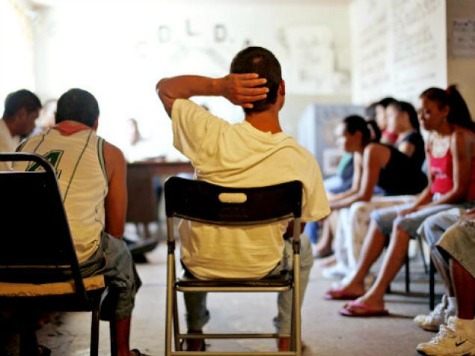
Mexico’s Juvenile Integration Center facilities to treat youth drug addiction are witnessing skyrocketing patient numbers but only meager increases in funding. According to Mexican newspaper El Universal, there has been an 81% increase in patients between 2006 and 2013 but only a 22% increase in funding.
The newspaper notes that the number of minors seeking treatment at facilities grew from about 18 million in 2006 to a full 33 million last year. Much of this increase occurred during President Felipe Calderón’s tenure, when addiction observers noted that Mexico began to shift from being a “trampoline” for drugs going north to being a “consumer” country, according to the Houston Chronicle. The market for drugs within Mexico grew so much in 2009 that drug cartels began to violently target rehabilitation centers; at least 43 people were killed in attacks on rehabilitation centers in Juarez between September 2008 and October 2009.
As the market and demand grew, the size of the nation’s treatment programs did not. Reporter Magali Téllez notes that her research found only a 22% increase in funding for drug centers between 2006 and 2013, and much of it went to increasing the salaries of the highest-ranking officials in the system.
In an interview with a psychiatric official of the Juvenile Integration Center system, Téllez argues that one significant problem is that the financial aid system that makes it possible for families to send minors to rehab leaves the system underfunded. “The 115 centers in the country do not have sufficient resources to tend to addictions,” she writes, “since the families of adolescents pay 30 pesos for a rehabilitation process if the treatment can be done at home, or 2,000 pesos monthly if the minor needs to be hospitalized, [which includes] medicine, breakfast, lunch, dinner, and recreational activities.”
But the families never pay this much. Psychiatric official Ricardo Sánchez Huesca notes that what families actually pay “is a recovery quota assigned by a social worker after conducting a socioeconomic study, never something that cannot be paid.”
While alcohol is by far the most common addiction for which young people seek treatment, the appearance of drugs like methamphetamine and cocaine on the list alarms experts, particularly as methamphetamine becomes a growing threat in the United States as well. The Mexican government under President Enrique Peña Nieto has focused its efforts heavily on fighting the violence of drug cartels, with a significantly smaller emphasis on helping drug addicts recover. In addition to fighting the cartels with law enforcement, Mexico has begun to organize a border patrol to protect the southern border through which both drugs and illegal immigrants from Central America often pass.

COMMENTS
Please let us know if you're having issues with commenting.